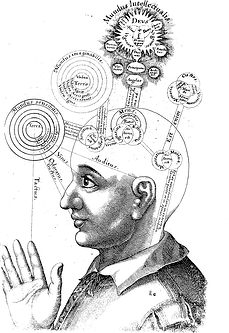Do Your Employees Think Critically?
 One of the complaints educators in colleges and technical schools hear from employers is that their graduates don’t enter the workplace with well-developed critical thinking skills. Such abilities enable employees to solve challenging problems more quickly and successfully. As manufacturing has become more complex and with increasing pressures to reduce costs while improving part quality and delivery times, it is essential that CNC machine operators, supervisors and other employees are capable of solving problems through critical thinking.
One of the complaints educators in colleges and technical schools hear from employers is that their graduates don’t enter the workplace with well-developed critical thinking skills. Such abilities enable employees to solve challenging problems more quickly and successfully. As manufacturing has become more complex and with increasing pressures to reduce costs while improving part quality and delivery times, it is essential that CNC machine operators, supervisors and other employees are capable of solving problems through critical thinking.
If a new employee comes to you with the ability to think critically, your managerial culture can either nurture or inhibit this skill. Too often, in an effort to keep a job moving, a supervisor will simply solve problems for their employees, rather than force them to come up with their own solutions.
If you want to encourage critical thought, ask all employees who bring you problems to also give you their best solution. Even if the solution they present isn’t feasible, it enables you to ask questions that stimulate thinking and help the employee make a better decision. Some of the questions it’s appropriate to ask are: “If I wasn’t here, what would you do?” “If we do what you suggest, what is the likely outcome?” “Are there any risks involved? If so, are they acceptable?” “Have you thought of any alternatives?” By asking questions like these instead of just saying “yes” or “no” to the suggestion, you make the employee think through the situation and come to a more informed decision. Over time, this process builds self-confidence as the employees realize that they can make sound decisions on their own.
To further encourage critical thinking, teach your employees these fundamentals:
- Analysis: Make sure you understand the problem thoroughly. Break it down into its component parts so you avoid jumping to conclusions. If a part is out of tolerance, for example, discretely consider the tooling, workholding devices, machine condition, part material, programming, etc.
- Check References: Is the part print accurate? Is everything in accordance with acceptable standards? Was the setup done according to plan?
- Gather Information: Are there resources available such as machine manuals, online tutorials, tooling tips, etc. Does your CNC control system provide data that can help you determine the source of the problem?
- Apply Logic: Based upon the hard evidence available – not gut feelings or random thoughts – what is the most logical next step?
- Visualize The Outcome: If you implement this action, what will happen each step of the way? Can you foresee the impact of each of these steps? Finally, what will the end result look like?
Encouraging employees to think critically may require an initial investment of time, but will ultimately reduce downtime and improve processes as they learn to solve problems themselves and gain greater confidence in their own decisions.